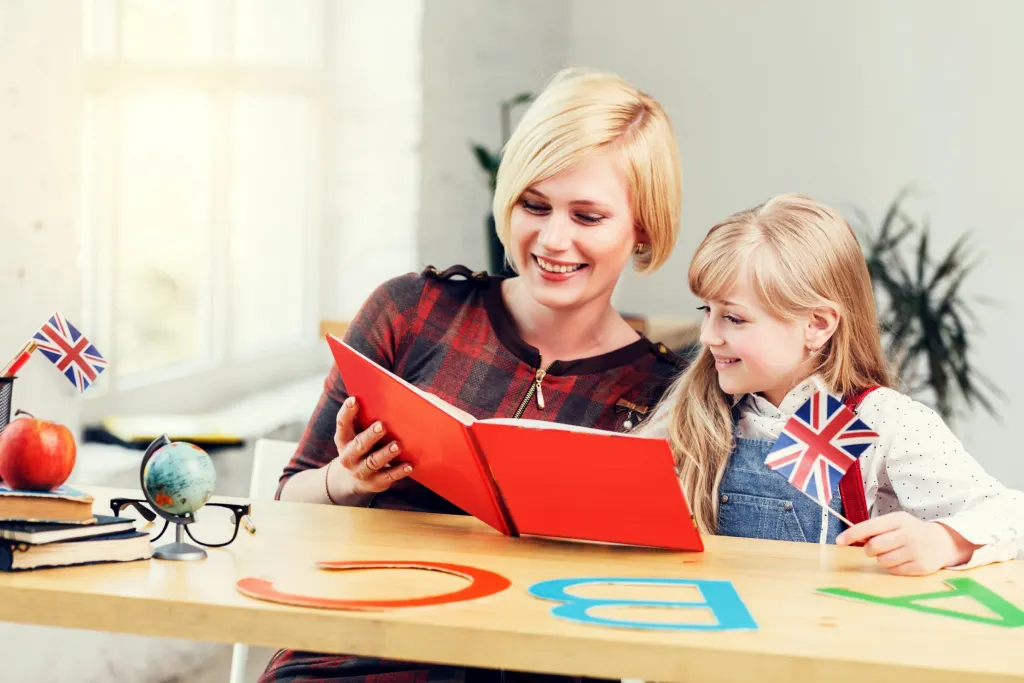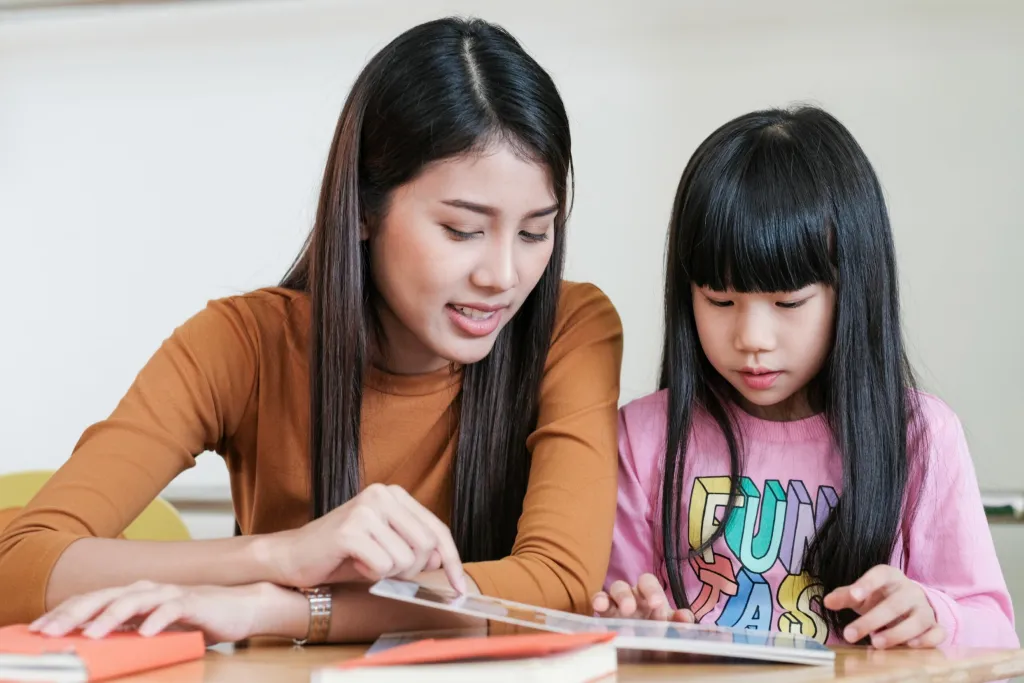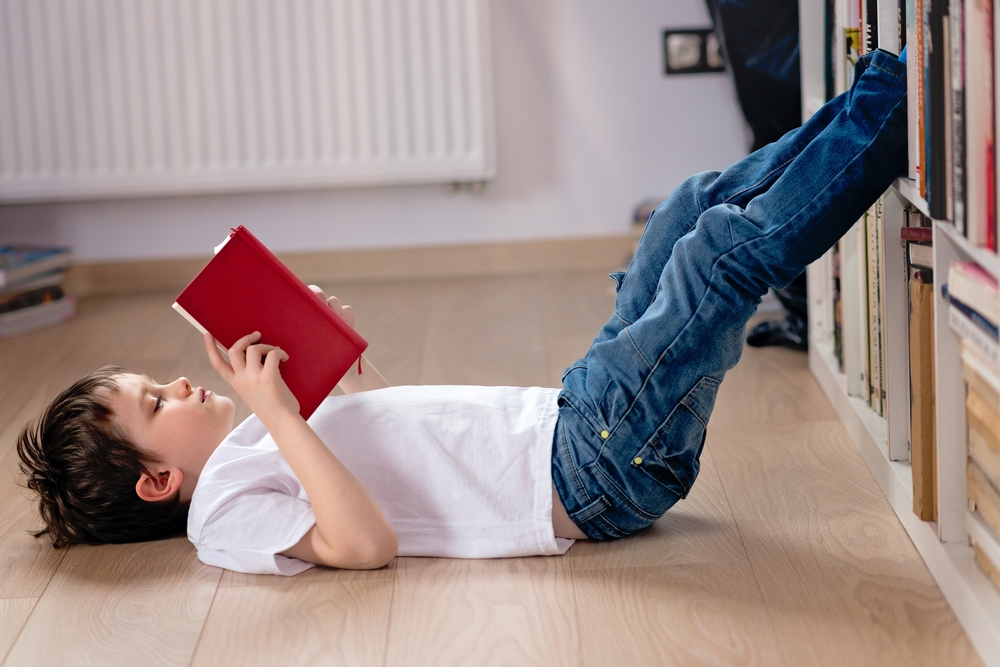Teaching kids to read in English: a simple technology or a true art?
- How to get a kid ready to learn to read in English
- How to teach children to read in English
- First stage
- Second stage
- How to introduce and practice reading rules
- The third stage is when we learn to read texts in English.
- How to develop English reading skills in children
- How to start ‘real’ reading in English?
- What do English kids prefer reading?
First, let’s find an answer to the question as to why in our hi-tech world, in the time of YouTube and Tik-Toc, the time when all the information you seek can not only be listened to, but also viewed, why should we waste time teaching reading—a skill that, today, seems to be fairly unpopular?
If you interview children themselves, more than half will say that reading even in their native language is boring and dull! And then they are forced to learn to read in English too !!!! Speak—yes ! Listen—yes, yes! Watch—yes-yes-yes !!! But reading—no….
However, you should explain to children that reading is not just about reading fiction in English. There are so-called ‘small forms’ related to reading to obtain necessary and, sometimes, very important information:
- Reading direction signs, signboards and billboards.
- Reading the menu in a cafe or restaurant.
- Reading various titles.
- Reading various instructions and recipes.
- Reading the composition of some products.
- Reading some application rules, etc.
All of the above in no way means reading entire pages of a text in thick books.
How to get a kid ready to learn to read in English
There are different views on when to start teaching children to read in English. The main thing is to understand that learning English with children should in no case begin with learning to read. Rather, reading is introduced at a further stage, as a way to consolidate existing knowledge, skills and abilities. It would be better that by this time the kid has learnt to read in their native language. And they must already have good technical skills—making syllables from letters, and words from syllables. Then, when teaching reading in English, attention will be focused only on sound-letter and letter-sound combinations, and the kid will be less tired in the learning process.
It would also be an advantage if the kid is already familiar with spoken English, so that the kid has at least some minimal set of English speech samples in their memory. This will help to correctly analyse the auditory image of the spoken word and correlate it with the visible alphabetic image, and vice versa.
How to teach children to read in English
The process of teaching reading to children can be divided into three stages:
- Stage 1 – memorizing sound-letter and letter-sound combinations.
- Stage 2 – getting acquainted with reading rules and practicing.
- Stage 3 – consolidation of the basic rules of reading, the ability to transfer and vary them on minitexts, the development of contextual guessing.
The process of teaching reading may not be positioned as teaching. It is better for the kid to perceive the whole process as a game. First, as a game with sounds and letters, and then as a game of words from which sentences are formed.
First stage
The purpose of the first stage is to memorise the letters of the English alphabet and the sounds that these letters stand for; special attention should be paid to memorising consonants. This issue is covered in detail in ‘English sounds and letters for children. How to make friends with them?’ and ‘How to learn the English alphabet with children: Tutorial.’ For more information, follow the links. Let’s summarise some of the core details here.
- First, memorising letters should go from an auditory image to a visual one because speaking is primary in relation to writing.
- Second, all sounding material must be supported by visual images. If you pronounce ‘a dog’´, show a picture (or show a picture, and the child pronounces ‘a dog’), then we emphasize and separate the first sound—ddddd—then show the letter Dd, both uppercase and lowercase.
- Third, engage the kid in an active process. Remember that children cannot focus on the same thing for too long. Therefore, activities need to be alternated: listening-talking-watching-writing. Be sure to include writing! Children love it—to write with a pen like adults. Just don’t demand well-written, clear letters. Just let children write. Let them write in a way they can. Children will be incredibly happy with what they wrote themselves!
Do not forget to praise! It is important.
Remember that the main activity for children is related to play, and also that all children possess great creativity. Letters and sounds, since we started studying them, should become our friends. And we are supposed to play with friends, always coming up with something interesting. Therefore, try to create a vivid visual image from each letter: decorate it, turn it into an animal or any other association. The task is for the kid to form a solid bridge between sounds and letters. Then, first, when the kid sees d-o-g, he or she will read and see not just a combination of letters, but a real dog; second, the sound of Ssssnake, sssun, etc. will be strongly associated with the image of the letter ‘Ss.’
Second stage
The second stage—mastering basic reading rules—should be divided into 3 parts:
- Getting acquainted with the rules of reading closed syllables.
- Getting acquainted with the rules of reading open syllables.
- Getting acquainted with the rules of reading diphthongs.
When getting acquainted with the rules of reading of closed syllables, first, sound-letter images of consonants are fixed in the child’s memory, and, second, the child begins to read the simplest words. This, in turn, stimulates the feeling of success in their mind and motivates for further learning.
The process itself is based on the principle of feasibility and accessibility, starting from the simplest vowel ‘o’, then ‘e’,then ‘i’, then ‘a’, and finally ‘u.’ You can finish with monosyllabic words with ‘y.’ This will be a bridge to reading open syllables.
When introducing the reading rules, it would be better to choose words that the child already knows in the spoken form. Recognizing them in reading will be a great joy. At the stage of training and consolidation, on the contrary, it is good to select new words, but always with pictures: the vocabulary will expand, consonants will be repeated, the child will definitely be reading and not guessing.
At the training and consolidation stage, we introduce gamification techniques. Children love winning and breaking records. For this reason, if from the very beginning of teaching reading you start recording the time of reading in their ‘success diary’, then the child will see progress and this will stimulate the kid to learn to read further.

How to introduce and practice reading rules
There are several options. You can make cards. Or you can find a cartoon. One of the best options would be the ‘Let’s read’ series from the Maple Leaf Learning website (for example, https://www.youtube.com/watch?v=UQkPO3qpUCg&t=2s), where they clearly pronounce a vowel sound and further combine it with different consonants. The child can repeat. Due to the fact that the words do not appear entirely but letter by letter, even the littlest ones will quickly learn to read.
For consolidation and practice, you can find reading simulators. They are lists of words composed of one or more reading rules. There are a lot of such simulators on the Internet! You can download some of them for free or find online options (for example, here https://www.youtube.com/playlist? list=PLPVtHmdLrdV-cAi4yTnGWZwf35_BH0uUN) and read, read, and read!
When the child has already learnt to read several vowels, then they can start reading combinations of words or phrases with different consonants. Such exercises are a transitional stage to reading entire sentences. Attention is getting trained, and the reading rules are getting practiced. You can select words with different consonants, for example, “big bag”. Such an exercise is also good for practicing reading open and closed syllables.
It is recommended to alternate reading exercises with play. For instance, kids love to make words from letters. It is almost like writing a dictation, but making words from letters is more interesting! When kids accumulate enough words, then you could try playing making words.
The so-called ‘ladders’ are also good for practicing reading. These ladders are columns of words grouped as a ladder—every new line has one more word added to the previous words. Thus, the ladder starts from one word, and, on the fifth line, there will be five words. The ladder method is a good technique to teach reading a whole sentence with different words. Thanks to the repetition in every line, kids memorise difficult combinations of letters. Ladders should and must be read using a timer.
The third stage is when we learn to read texts in English.
Minitexts can be introduced after teaching to read closed syllables. These would be the simplest texts with 3-4 short sentences, something like this:
This is a cat.
The cat is black.
It is fat.
It is in the bag.
Don’t forget to add a picture! First, it decorates the text and, second, it creates a visual image. The kid then understands the meaning of what they are reading better and, if they forget the word, the picture helps them remember. If the text has a new word, the picture helps develop contextual guessing.
However, it is not sufficient to use only descriptive texts. Let’s repeat: not everyone loves reading. But everyone should practice reading; so, what options do we have? Let’s also keep in mind that texts can have different meanings. Your goal is to create conditions where the kid cannot avoid reading. First, you could combine reading with other activities. For example, colouring. The key to colouring could be given as a text in English, so the kid can only find answers reading that text. The text will have the ‘read-and-colour’ instructions.
The second option is ‘finish-the-picture’ activities. This is when something needs to be added to the picture to make it complete. These exercises make the kids repeat colours, topic vocabulary, or grammar, for example, prepositions if the task is to find something, where and what it might be. Such activities engage kids and make them read, even those who do not like to read. Have you tried to draw a little monster following some descriptions with your kid? Or, maybe, a fantastic creature with three heads and five tails? You haven’t?
To offer variety, a second type of activity could be instructions like ‘draw a path’ or ‘read and say what it is’. These activities help create conditions for in-depth reading. If it is a path, then every tiny detail can be important! The same goes for the second task. Usually, it is a picture where there are a lot of identical objects or people, and the task is to find something or somebody fitting that description. Such exercises not only develop reading skills but help in memorizing words and learning grammar in a passive way.
Reading exercises can be based on physical activities. How? It is very easy! You can use some signs. Hide small notes with the clues for where to go and what to do around the room. These adventures can be really interesting for kids, so they naturally have to read those instructions in the hidden notes. And what if there is some kind of surprise awaiting the winner… The kid will be ready to read in English all day long just to keep on playing a game like this!
How to develop English reading skills in children
English reading rules have tons of exceptions that can make it difficult to learn reading even for the most motivated students. When the kid accumulates the lexical basis, they develop a mechanism of ‘acting on analogy’. This means that, when reading new words, the kid applies a ‘sample’ from his or her memory. It sounds paradoxical but the accumulation of these samples requires constant reading.
Simultaneous listening and reading or watching video with subtitles can be helpful. The main idea is to listen to the ‘model for imitation’ with proper pronunciation. The listening-and-reading activity might be challenging, but watching cartoons and movies for kids will be much more interesting and easier! We could recommend watching cartoons based on well-known fairy tales on the Pink Fong website (https://www.youtube.com/watch?v=Z-X4xVb-jNA). The cartoons have clear pronunciation, simple texts, large letters and an easy to follow plot.
How to start ‘real’ reading in English?
Reading in English should be pleasant for kids not only as a process but because they get this ‘I read and I understand’ moment! If the kid understands that reading is not scary but is actually something really fun, then they will be OK with reading. That is why we recommend to start reading about something the kid is interested in, and, second, visual information must prevail over textual information (more pictures, less text).
For these reasons, comics are the best option for first reading! Comics are based on well-known cartoons, so if the kid is familiar with these cartoons, they will be interested in learning new things about the favourite characters. What’s your kid’s hobby? Toy cars? Thomas the Tank Engine? Paw Patrol? You can download comics for free.
What do English kids prefer reading?
True lovers of English would love reading the books that English kids read. English children’s most favourite books are about Winnie the Witch and Wilbur the Cat. What adventures they have had! A short but captivating plot, funny illustrations, and easy language have made this book popular far beyond the United Kingdom. You can download the stories as well as audio books from the Internet.
Some other favourite characters are Peter Rabbit and Paddington Bear. The language is more difficult, and there are a lot of descriptions. But the stories are interesting.
And, of course, Harry Potter! Many want to learn English just to be able to read the original Harry Potter series.
Thus, teaching reading in English can be an interesting activity that can make the kid love reading and love English. If you need professional support, video lessons from Novakid, an online school of English for kids, are great for kids and their parents. Our tutors will help your kid to learn not only to read but to speak English, because the learning process is built as communication in English only! It’s worth a try, the first lesson is free!








































I’ve been surfing online more than 3 hours as of late, but I never found any interesting article like
yours. It is lovely price sufficient for me. In my opinion,
if all site owners and bloggers made just right content material as
you probably did, the internet can be a lot more helpful than ever before.